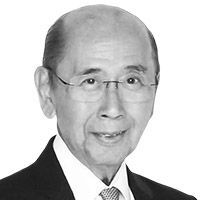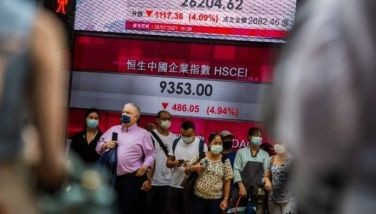Populism in the 2010 elections

We can now mark it down: the 2010 election season officially started last Monday, July 27, when President Arroyo delivered her State of the Nation Address (SONA) at the opening of the last regular session of the present Congress. Within the halls of the legislature, you could feel the heartbeat of the coming balloting as every legislator and politician went out of their way to greet and glad-hand each other. Outside the building, other legislators and politicians were doing much the same thing, as they posed energetically before the cameras to dramatize their disdain for GMA and their rejection of her address.
From here on, we will hear nothing but talk about the coming elections – who is running, who is up, who is down. There will be no stopping the vote in spite of all the alarms about Con-Ass being convened or martial law being declared.
All this is proof that our democracy is alive and well, its many warts notwithstanding. But there is one respect in which this explosion of interest in the 2010 elections is not reassuring – and this is the way almost all the presidentiables are reducing the presidential race to just the most enticing populist message to the C, D & E income classes. All are promising to lift our poor from poverty, banish corruption, cut privileges for the elites, usher in peace throughout the realm – but they are all short on specifics on policy and program.
Political arithmetic
All presidentiables are talking populist because of the political arithmetic that to win in May, one must capture a substantial part of the C, D & E votes. Never mind the A and B voters; they are very few.
Clearly, no one has forgotten former President Joseph Estrada’s triumphal march to Malacañang when he took over 50 percent of the vote on the strength of his “Erap Para Sa Mahirap” refrain. For most, it is the template for victory.
The trouble with the populist card, however, is that so far it has not gone beyond sloganeering. While the presidentiables have been indefatigable in assailing President Arroyo, bewailing corruption, moaning over mass poverty, and decrying the state of the nation, none of them has taken the trouble to explain how exactly governance can be made better, how the poor can be emancipated from poverty, or how new wealth will be created in the country.
When the questions turn to matters of policy and program, the presidentiables have been mainly silent or vague. The thinking seems to be that the electoral majority does not think that far, so there’s no need to propose specific policies and programs on what one will do in office.
It’s striking, for instance, that Manny Villar and Noli de Castro have studiously avoided the various forums that have been organized to hear what each presidentiable has to propose the nation. But it’s also significant that those who did attend have not been enlightening in their presentations of what they would do if they became president.
Convergence of new challenges
It matters that the presidentiables are not more forthcoming because the nation has clearly entered a new period of profound challenge and complexity, when we will need the best and the brightest to help in the tasks of governance and development. To cite the greatest threats and challenges, we are facing today a widespread global recession that is already taking its toll on our economy, the continuing and gathering threat of terrorism in our region and the persistent challenge of insurgency in our midst, the rising problem of climate change and environmental disaster, and the shifting tides of international relations which will test our diplomacy to the hilt. Along with the threats, there are also the opportunities that have arisen with the revolution wrought by information technology and the dramatic changes in world demographics.
If our presidentiables are not thinking seriously about these challenges on the horizon, we will be in for a sorry presidential term ahead of us. It is vital in my view to force the political dialogue to discuss these challenges and ferret our policy approaches so that the nation will have a yardstick to measure each candidacy before and after the election.
It is not enough for a presidential candidate to promise that he/she will raise every Filipino out of poverty; they have to go further and say how exactly they will grow the economy, how they will create new jobs and raise incomes.
It is not enough for candidates to promise to improve infrastructure, increase investments, expand exports, improve tax collections, and strengthen our ties to the global economy; they have to spell out what they will specifically do to bring about these desirable things.
It is not enough to rail against corruption in the country and invoke hellfire on the big fish; they have to detail how exactly they will remove this cancer that infects all branches and levels of government today. And so it goes down the line on all issues and problems that will test the new president from Day One next year.
Populism glides over these questions, believing that these are not of interest or are beyond the ken of the C, D & E voters. But this is precisely how we fall into the ditch once the balloting is over. Once Erap was ensconced in Malacanang in 1998, he had no clue how to redeem his promises to the poor and to the nation.
Populism vs realism
There is a vivid contrast between the experience of Latin America under populism and that of East Asia under hard-nosed realism.
Populists have been successful in Latin America where there is a great inequality, mass poverty and underdevelopment. In running for office they promise food, housing, employment, basic social services, and income-redistribution. Once in power, however, they soon discover fiscal and political limits to fulfill the promises. Those that forced their nation’s coffers to fund them precipitated the collapse of their economies as they sank under the weight of debt, currency pressures and hyperinflation.
In contrast, East Asian economies have developed through high rates of savings, investments, and improvement in education. Even when the economic miracle was struck down by the 1997 financial crisis, East and Southeast Asia have rebounded, and now is joined by India to lead the world in economic growth and dynamism.
By reason of prudent policies and programs, it can be said that we are doing better than many of our neighbors today. It would be a disaster if in the 2010 presidential election – for failure to debate intelligently the issues and the options – we will wind up on the side of Latin American populism instead of that of East Asian realism.
- Latest
- Trending























